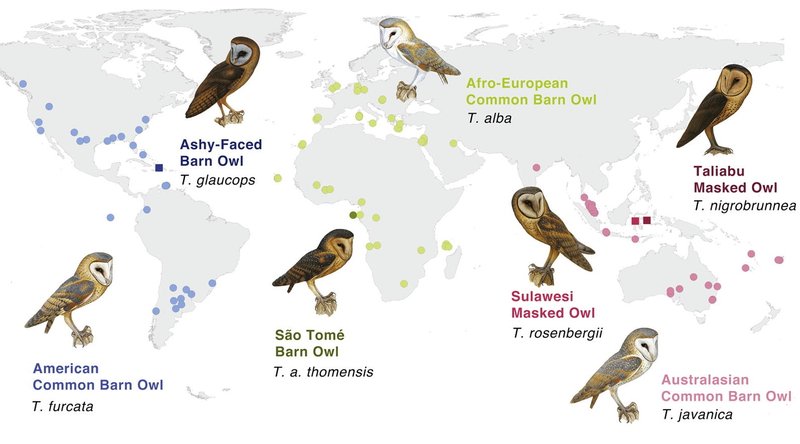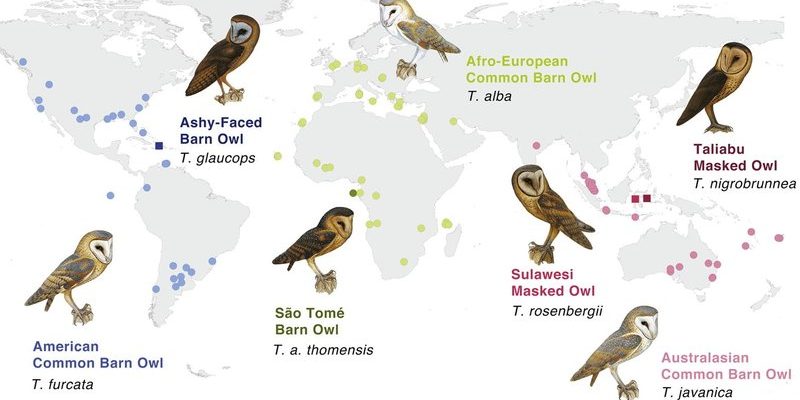
Imagine sitting at a coffee shop, chatting about the wonders of nature. You might not realize it, but the owl’s story is intertwined with the evolution of birds themselves. From tiny, ancient relatives to the impressive variety we see today, owls are a testament to the adaptability and resilience of wildlife. So, let’s dive into the remarkable journey of owls through time.
The Origin of Owls
Owls belong to the order *Strigiformes*, a group that has been around for at least 60 million years. That’s a long time! They first appeared after the dinosaurs went extinct, which was a golden opportunity for many species to thrive. Picture a world where massive reptiles no longer roamed—small mammals, including the ancestors of modern owls, began to make their presence known.
These early owls were quite different from the ones we recognize today. They were smaller, for one. The most ancient of their kind, like *Athene* and *Bubo*, gradually evolved to adapt to their surroundings. Over millions of years, features like their distinct facial discs and powerful talons emerged, giving them exceptional hunting capabilities.
The evolution of owls is also significant because they serve an essential role in their ecosystems. As nocturnal predators, they help control populations of rodents and insects. So, from the beginning, owls were not only survivors; they were pivotal players in maintaining the balance of nature.
The Distinct Features of Owls
Have you ever noticed how owls have those big, forward-facing eyes? This unique feature isn’t just for show. Owls have binocular vision, which allows them to judge distances accurately—a crucial trait for a predator. Think of them as the night’s stealthy hunters, gliding silently on wings designed for stealth.
Their feathers are another fascinating aspect. Unlike most birds, owls have soft feathers that help them fly almost silently. This stealth allows them to swoop down on unsuspecting prey without a sound. Picture an owl in flight, moving like a shadow through the night air. They’re incredibly effective at hunting thanks to their specialized adaptation.
On top of that, owls have an extraordinary hearing ability. Their ears are not positioned symmetrically, which helps them pinpoint the location of sounds with striking accuracy. If you’ve ever heard an owl hooting from a distance, you might have sensed that they know exactly what’s going on around them, even in complete darkness.
The Cultural Significance of Owls
Owls have had a significant impact on various cultures throughout history. In ancient Greece, they were associated with Athena, the goddess of wisdom. This connection has led people to regard them as symbols of knowledge and insight. You might picture owls in storybooks or hear them referenced in proverbs—these creatures have long been linked to human experiences.
In other cultures, owls are seen as omens. Some believe they bring bad luck or warn of impending death. It’s interesting how different societies interpret these magnificent birds in various ways. Their mysterious nature makes them intriguing figures in folklore and mythology across cultures.
Modern interpretations still carry these sentiments, and owls often appear in literature and art. Think of how many movies feature wise old owls guiding the main character! It’s a testament to how deeply ingrained these creatures are in our collective consciousness.
The Different Species of Owls
Owls come in various shapes, sizes, and species, each adapted to its unique habitat. There are around 200 species of owls, ranging from the small *Elf Owl* that weighs less than an ounce to the massive *Great Horned Owl* with a wingspan that can exceed five feet. Imagine that—how incredible is it that such diversity exists within one group of birds?
Some of the most well-known species include the *Barn Owl*, recognizable by its heart-shaped face, and the *Snowy Owl*, famous for its striking white plumage and association with the Harry Potter series. These variations showcase how owls have adapted to different environments, from forests and grasslands to deserts and arctic regions.
Each species plays a role in its ecosystem, with unique traits that help them thrive. For instance, the *Burrowing Owl* is known for living in underground burrows, while the *Eastern Screech Owl* can camouflage itself perfectly with tree bark. This adaptability highlights the incredible evolutionary journey owls have taken over time.
Conservation Challenges Facing Owls
Despite their fascinating history, owls face significant challenges today. Habitat loss due to urbanization and agricultural expansion poses a serious threat to their populations. Imagine losing the very homes that provide food and safety. It’s a heartbreaking reality that many animal species, including owls, face in our changing world.
Pollution, particularly from pesticides, also impacts their survival. When they prey on contaminated rodents, these toxins accumulate in their systems. This phenomenon is known as bioaccumulation, and it can lead to health issues and decreased reproductive success. As popular as owls are, the reality is that they are not immune to the consequences of environmental neglect.
Conservation efforts are now more crucial than ever. Various organizations are working to protect habitats, reduce pesticide use, and raise awareness about the importance of owls in our ecosystems. By understanding their evolution and the challenges they face, we can become better stewards of the environment and ensure that future generations can enjoy these enchanting creatures.
Owls in Modern Society
In recent years, there has been a surge in interest regarding owls, especially in urban areas. Birdwatching has become a popular hobby, and people are increasingly eager to learn about their local owl populations. Many communities even host events to celebrate these nocturnal creatures.
Social media has also played a role in raising awareness. Cute videos and photos of owls often go viral, sparking curiosity and admiration. Who doesn’t enjoy watching an owl blink slowly or tilt its head in a curious way? This newfound appreciation can aid conservation efforts by encouraging people to protect the environments where owls thrive.
Moreover, educational programs and workshops are springing up to inform the public about owls. Understanding their behaviors, habitats, and conservation needs can help foster a sense of responsibility toward these beautiful birds. The owl’s story is ongoing, and with our help, it can continue to evolve positively.
Final Thoughts on the Owl’s Journey
The journey of owls through history is one of evolution, adaptability, and cultural significance. From their ancient origins to their modern-day roles as symbols of wisdom and guardians of the night, owls have an incredible story worth knowing. They remind us of the beauty of nature and the importance of preserving it.
As we reflect on the evolution and history of these remarkable birds, let’s commit to being advocates for their protection. Whether through supporting conservation initiatives or simply appreciating them in our local environment, every small action counts. Owls have been around for millions of years; let’s ensure they stick around for many more to come.

